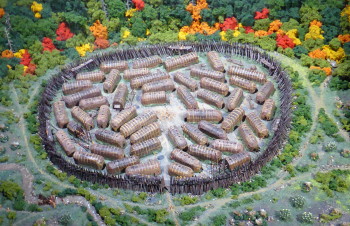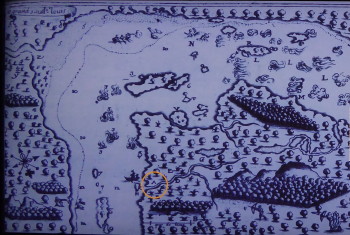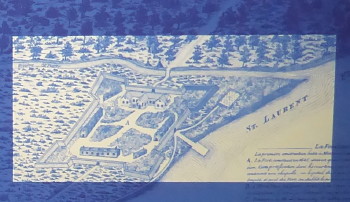Montréal's three beginnings, Hochelaga, Tiohtiagi, and Ville-Marie

Guest Speaker: Roy Wright
When: Thursday 19 january 2017, from 19h30 to 21h
Where: Centennial Hall
288 Beaconsfield Blvd, Beaconsfield, H9W 4A4
Lecture in English followed by a bilingual question period.
As we celebrate 375 years since the founding of a permanent European settlement at Montréal, we would do well to recall the two previous occasions when French explorers remarked its significance for eventual future settlement, realized in 1642.
In 1535 Jacques Cartier visited Hochelaga, then as now a centre rivalling the downriver Stadacona settlement at what is now Quebec City. He described it as a community of some 1500 inhabitants surrounded by a palisade, and during his short visit was taken by its chief to the top of nearby Mt. Royal.
 In 1609 and 1611, Samuel de Champlain visited the sites of today's Kahnawake and Montréal (marking the latter with an A on his 1612 map). Here he had to portage around “Sault Saint-Louis”, the Lachine Rapids, noting their importance to the natives gathering to parlay and trade, the former diplomatic function commemorated in the Iroquoian name Tiohtiagi, and the latter commerce still a hallmark of Montréal's importance at the start of the St. Lawrence Seaway.
In 1609 and 1611, Samuel de Champlain visited the sites of today's Kahnawake and Montréal (marking the latter with an A on his 1612 map). Here he had to portage around “Sault Saint-Louis”, the Lachine Rapids, noting their importance to the natives gathering to parlay and trade, the former diplomatic function commemorated in the Iroquoian name Tiohtiagi, and the latter commerce still a hallmark of Montréal's importance at the start of the St. Lawrence Seaway.
Finally in 1642, Paul de Chomedy de Maisonneuve, Jeanne Mance and about 50 French settlers started to build a community at the site marked 30 years earlier. The new fortified settlement was named Ville-Marie, in celebration of the religious vision of Sieur de Maisonneuve and Bishop Laval.
================================================